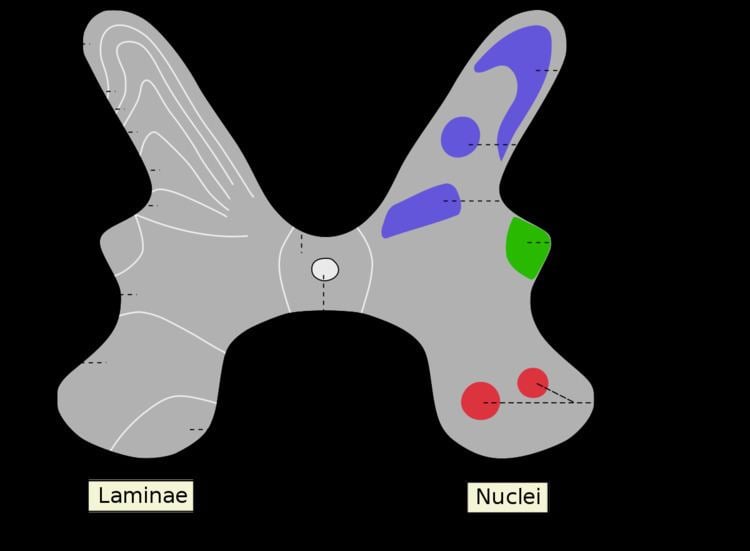MeSH A08.186.854.610.800 TA A14.1.02.119 | Dorlands/Elsevier s_27/12766752 FMA 74019 | |
 | ||
Latin substantia gelatinosa cornu posterioris medullae spinalis | ||
The apex of the posterior grey column, one of the three grey columns of the spinal cord, is capped by a V-shaped or crescentic mass of translucent, gelatinous neuroglia, termed the substantia gelatinosa of Rolando (or SGR) (or gelatinous substance of posterior horn of spinal cord), which contains both neuroglia cells, and small nerve cells. The gelatinous appearance is due to a very low concentration of myelinated fibers.
It is named after Luigi Rolando.
It corresponds to Rexed lamina II.
Function
The substantia gelatinosa is one point (the nucleus proprius being the other) where first order neurons of the spinothalamic tract synapse.
Many μ and κ-opioid receptors, presynaptic and postsynaptic, are found on these nerve cells; they can be targeted to manage pain of distal origin.
C fibers terminate at this layer. Thus the cell bodies located here are part of the neural pathway conveying slowly conducting, poorly localized pain sensation. However, some A delta fibers (carrying fast, localized pain sensation) also terminate in the substantia gelatinosa, mostly via axons passing through this area to the nucleus proprius. Thus, there is cross talk between the two pain pathways.
